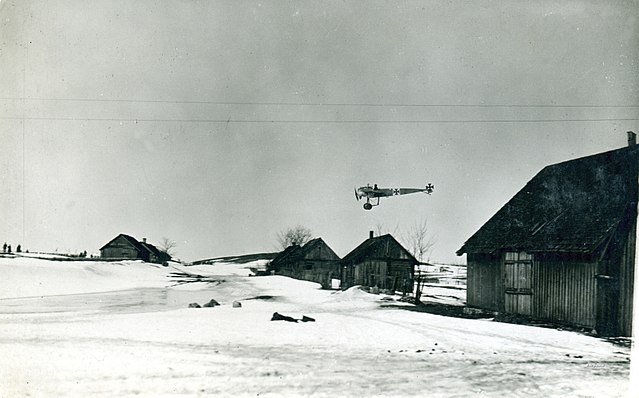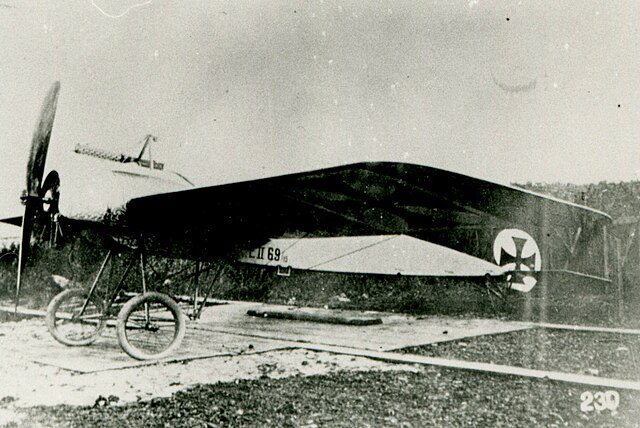The Fokker E.II was the second variant of the German Fokker Eindecker single-seat monoplane fighter aircraft of World War I. The E.II was essentially a Fokker E.I with the 75 kW (100 hp) Oberursel U.I 9-cylinder rotary engine, a close copy of the French Gnôme Monosoupape rotary of the same power output, in place of the E.I's 60 kW (80 hp) Oberursel U.0, but whereas the E.I was simply a M.5K with a 7.92 mm (.312 in) machine gun bolted to it, the E.II was designed with the weapon system integrated with its airframe.
Fokker E.II
Fokker E.II/35 from Feldflieger Abteilung 14 preparing to land on the Eastern Front.
Max Immelmann's Fokker E.II in late October 1915, showing the initial form of soffit surface that the larger Oberursel U.I nine-cylinder rotary engine and larger diameter cowl required.
Image: Fokker E.II (2161 026072)
Fokker Eindecker fighters
The Fokker Eindecker fighters were a series of German World War I monoplane single-seat fighter aircraft designed by Dutch engineer Anthony Fokker. Developed in April 1915, the first Eindecker ("Monoplane") was the first purpose-built German fighter aircraft and the first aircraft to be fitted with a synchronization gear, enabling the pilot to fire a machine gun through the arc of the propeller without striking the blades. The Eindecker gave the German Army's Air Service (then the Fliegertruppen des deutschen Kaiserreiches) a degree of air superiority from July 1915 until early 1916. This period, during which Allied aviators regarded their poorly armed aircraft as "Fokker Fodder", became known as the "Fokker Scourge".
Fokker Eindecker fighters
Fokker M. 5K
Morane-Saulnier H
A close-up photo of Otto Parschau's first Fokker monoplane, armed with a synchronized Parabellum MG14 machine gun in May 1915, which essentially became the "prototype" Fokker Eindecker.








